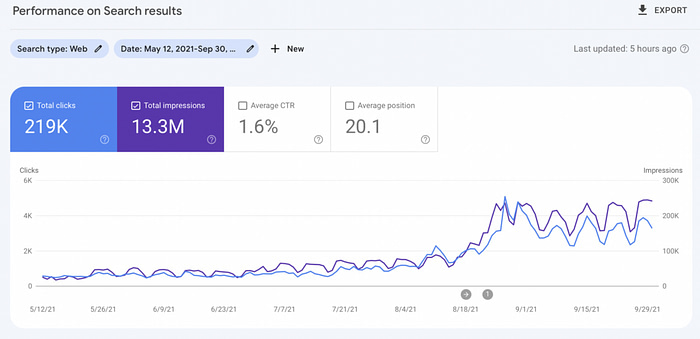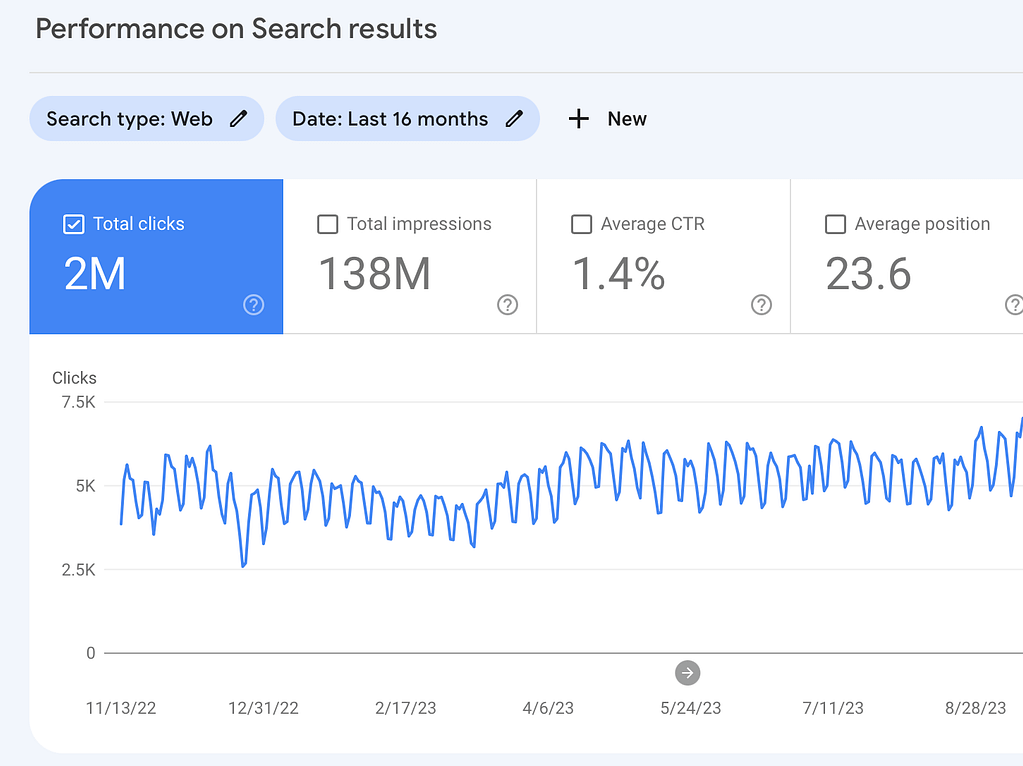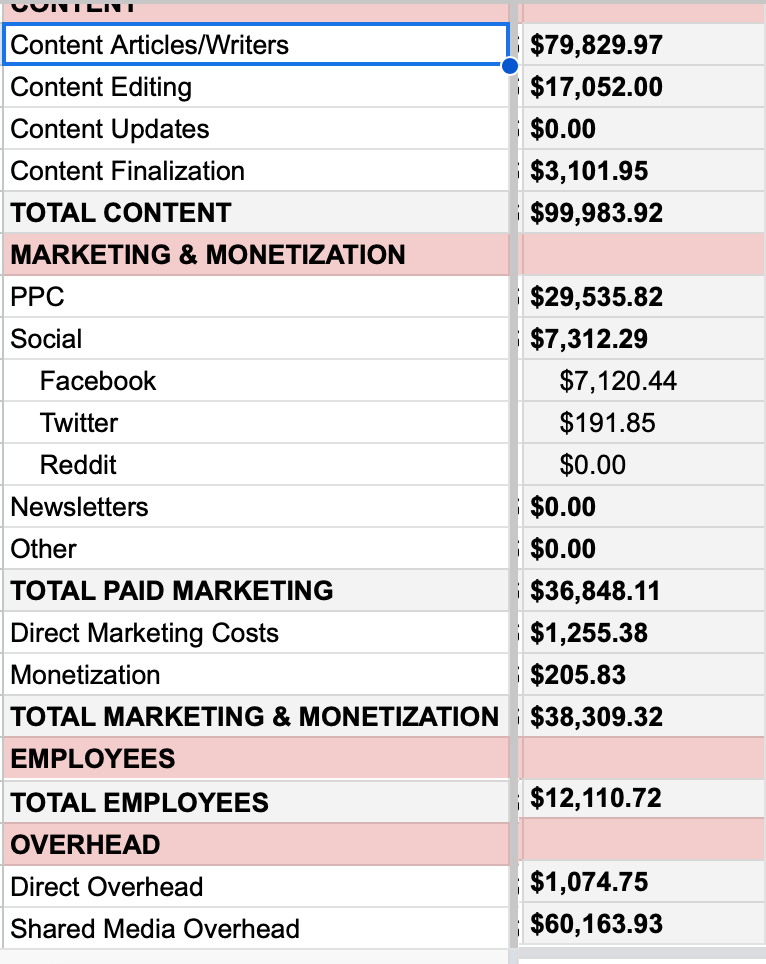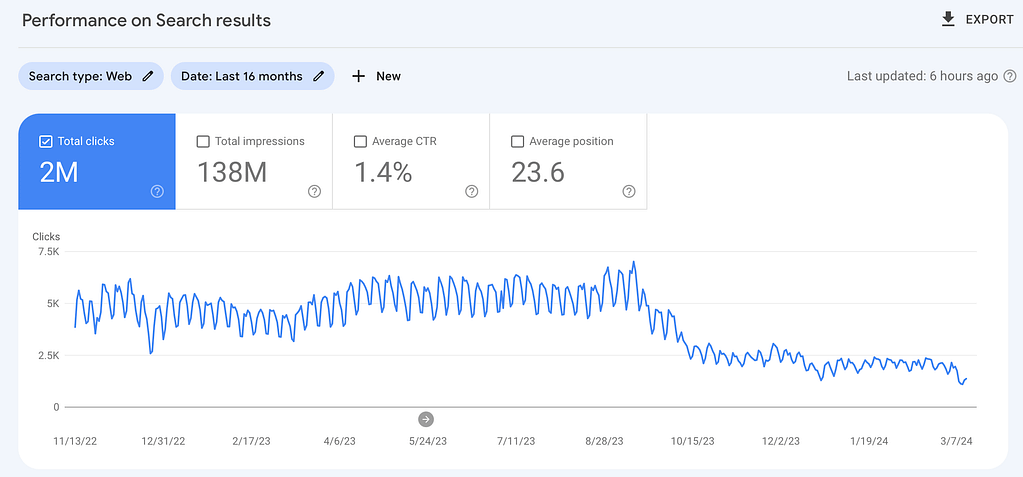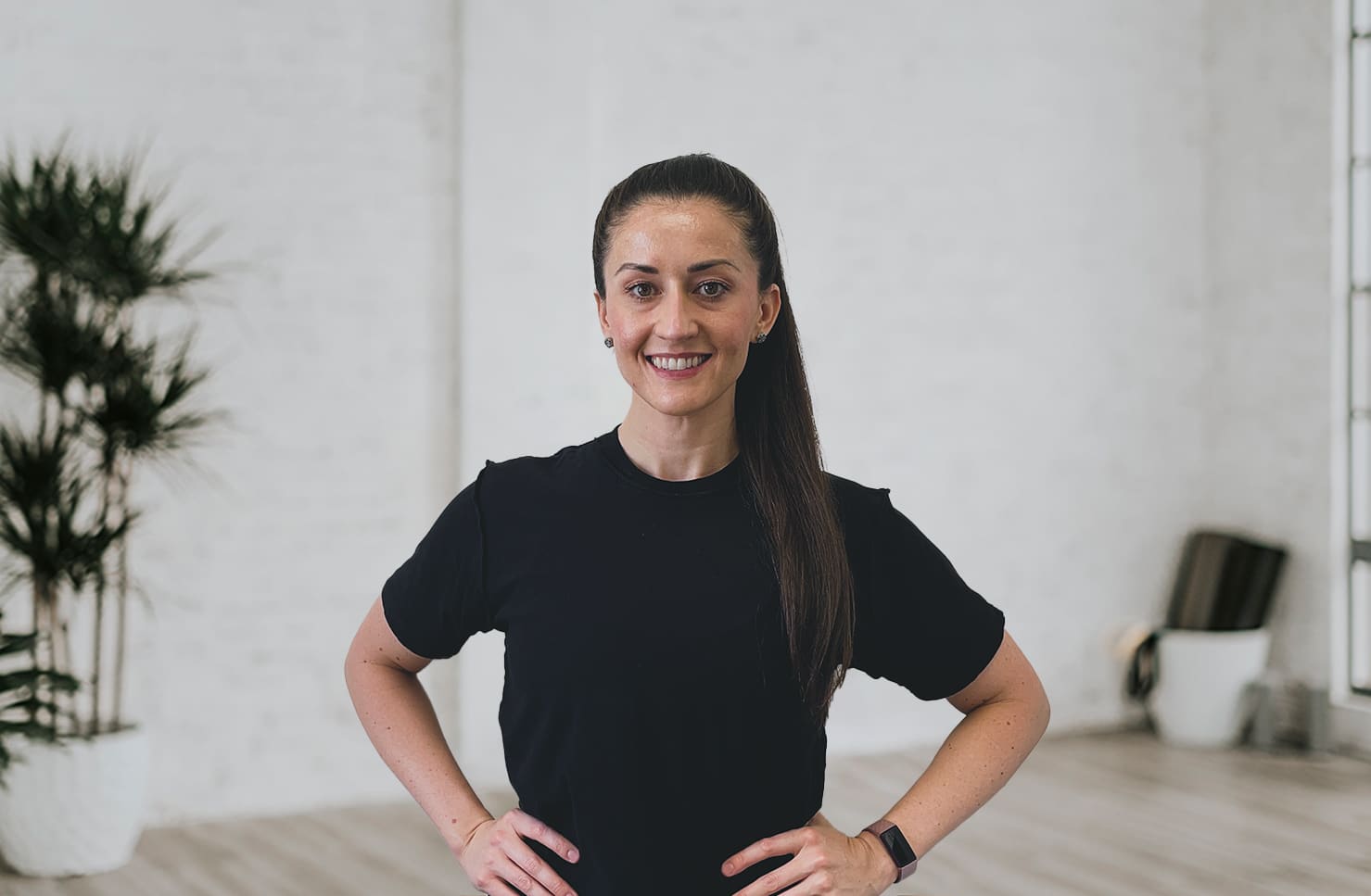Are vegetable and seed oils “toxic”?!
From TikTok to bestseller lists, vegetable oils—a.k.a. “seed oils”—are a big topic right now.
To be fair, folks have debated the merits of vegetable oils dating back to when they first entered the marketplace.
More recently, however, with the advent of the carnivore diet, vegetable oil hate has roared back into the socials. Maybe you’ve come across posts that refer to these cooking oils as “toxic sludge,” “motor oil,” “the hateful eight,” and “the biggest cause of chronic disease that nobody knows about.”
The anti-vegetable oil logic goes something like this…
Animal fats have been with humans for thousands of years. Vegetable fats, on the other hand, were invented during the last century when profit-seeking companies wanted to find a way to sell cheap-to-grow foods to unsuspecting consumers.
Another argument: Like margarine, vegetable oils were marketed as healthier alternatives for butter, and yet, people argue, these oils are worse than butter, raising your risk for obesity, anxiety, depression, ulcerative colitis, and more.
In contrast to the above line of thought, other experts will tell you that vegetable oils are harmless, potentially even health-promoting—and absolutely better than butter.
So, who’s right?
Like so many nutrition topics, the truth is too nuanced to fit on a meme.
In this story, we’ll help you sort the science from the pseudoscience so you can make informed decisions about the oils you choose to include in your diet.
What are vegetable oils?
Sometimes called “seed oils,” vegetable oils start, as you might suspect, from the seed of a plant. The most common ones you’ll find in a typical grocery aisle include:
- Canola oil
- Corn oil
- Safflower oil
- Sesame oil
- Sunflower oil
- Soybean oil
- Grapeseed oil
By the way, if you feel like there’s a bunch of oils missing from that list, it’s probably because those oils come from non-seed plants (such as olive, avocado, palm, or coconut oil, which all come from fruits, and aren’t considered vegetable or seed oils).
How are vegetable oils processed?
Non-vegetable oils—such as olive and avocado oil—are derived from naturally fatty foods. In fact, olives are so oily that you could theoretically make your own olive oil at home. (Just Google “how to make olive oil from scratch,” and you’ll find a number of videos walking you through the steps.)
The same can’t be said of most vegetable oils, which mostly come from foods with a relatively tiny fat content to begin with.
Case in point: A cup of green olives contains about 20 grams of fat,1 whereas a cup of corn has 2 grams.2
As a result, manufacturers must use an extensive multi-step process to extract this small amount of oil from these non-oily foods. These steps include:
- Crushing: A machine uses high pressure to press oil from the seeds.
- Refining: The seeds are heated with a solvent, such as hexane, to extract more oil.
- Deodorizing: To create a neutral taste and remove unwanted compounds, the extracted oil is then cooked at 400 F (204 C) for several hours.
During this process, health-promoting polyphenols and other stabilizing nutrients are lost, and small amounts of unsaturated fats are transformed into trans fatty acids (also called partially hydrogenated fat).
(Interesting fact: This also happens during deep frying. When vegetable oils sizzle in a restaurant’s deep fryer for hours, the trans fat content of the oil increases.)
To call these processed oils “toxic” might be an exaggeration. However, nutrition scientists generally agree that people should avoid trans fats in the diet, and in 2018, the Food and Drug Administration banned manufacturers from adding trans fats to processed foods.3 4
What cooking oils should you eat?
At PN, we’ve created several visual guides people can use to make informed decisions about what to eat.
(We’ve also created a shopping list, which you or your clients can print out and take to the grocery store. Check it out: Healthy Fats Shopping List)
In these guides, we’ve placed a few vegetable oils—expeller-pressed canola oil, high-oleic sunflower, and safflower oils—in the “Eat Some” section. For us, “eat some” is another way of saying that these foods will neither improve health nor harm health—when consumed in reasonable amounts. In some cases, like in the example of dark chocolate, when consumed in small amounts, they might even improve health.
The rest of the vegetable oils, along with butter and other saturated fats, fall into the “Eat Less” category, as the image below shows. You’ll find vegetable oils in bold.

We’ve gotten hate mail from folks who say certain vegetable oils—especially cold-pressed canola oil—should appear alongside olive oil in the “eat more” category. Plenty of others say all vegetable oils belong in the “eat less” column, and that butter belongs in “eat some” or even “eat more.”
To understand the scientific reasoning behind our recommendations, let’s explore some head-to-head matchups.
Extra-virgin olive oil vs. expeller-pressed canola oil
These oils are the least refined of their kind.
To make extra virgin olive oil (EVOO), manufacturers grind and mechanically press olives, without using any heat. Similarly, expeller-pressed canola oil is made by mechanically pressing rapeseed, without the use of heat or chemical solvents.
🟢 The case for extra virgin olive oil (EVOO)
Olive oil is richer in heart-healthy monounsaturated fatty acids (MUFAs) than almost any other cooking oil.
In addition, unlike the more refined “light” olive oil, EVOO maintains most of the olive fruit’s original polyphenols. These plant-based substances help to combat inflammation and protect cells from damage.
Perhaps most importantly…
More studies vouch for EVOO’s health-promoting qualities than for any other cooking fat.
For example, researchers asked 22,892 adults from Southern Italy to self-report their olive oil consumption. People who consumed the most olive oil (more than two tablespoons a day) were 20 percent less likely to die over the 13-year study than people who consumed the least olive oil (less than one tablespoon a day).5
Other research has linked the consumption of olive oil with a reduced risk of:
- High blood pressure6
- Heart disease
- Type 2 diabetes7
- Dementia8
- Cancer9
Consumption of olive oil is also associated with reductions in LDL cholesterol, especially when used to replace saturated fats like butter and coconut oil.10
Smoke point: Should you avoid cooking with olive oil?
Years ago, culinary experts recommended using EVOO only on salads and other uncooked foods. Back then, they assumed EVOO’s relatively low smoke point (350 to 410F) meant the oil would break down when heated, losing some of its distinctive flavor and health benefits.
We now know that smoke point isn’t as big a deal as previously thought.
That’s especially true in the case of EVOO, whose polyphenols and high concentrations of monounsaturated fats help keep the oil stable when heated.
In research that heated a variety of cooking oils to 464 F (240C) and then held them at 356 F (180C) for several hours, EVOO remained more stable than any other oil tested, including canola oil.11
🟡 The case for expeller-pressed canola oil
One of the more affordable cooking oils on the shelf, canola oil, is made from a Canadian-made hybrid of the rapeseed plant.
(The word “canola” refers to the first three letters of “Canada” with a fun “ola” added to the end for marketing purposes.)12
Among vegetable oils, canola is the richest in heart-healthy monounsaturated fats (though several non-vegetable oils have it beat) as well as alpha-linolenic acid, a plant-based omega-3 fatty acid.
In addition, canola oil contains plant substances called phytosterols that help influence blood cholesterol for the better, especially when used as a substitute for butter, research has found.13 14 15
The winner
Extra virgin olive oil is the clear winner.
The body of research in support of EVOO dwarfs the body of research in support of expeller-pressed canola.
In addition, EVOO has a more favorable fatty acid profile. By the way, so does avocado oil, which is why you’ll also find it in the “eat more” column.
However, you can buy roughly twice as much expeller-pressed canola oil for half as much money as EVOO. Because of this, expeller-pressed canola can be a good budget-friendly choice. In addition, because of expeller-pressed canola’s more neutral flavor, many people prefer it over EVOO for baking.
When used in moderation, expeller-pressed canola can be part of a healthy diet. It is likely to be at least health neutral, if not somewhat health beneficial.
Expeller-pressed canola oil vs. refined canola oil
This match-up comes down to how processing methods affect the end product.
🟡 Expeller-pressed canola oil
An expeller press is a machine that squeezes oil out of seeds.
It’s able to do this without the use of solvents or heat, which helps preserve beneficial compounds such as alpha-linolenic acid and phytosterols.
🔴 Refined canola oil
Refining removes some protective alpha-linoleic acid while adding small amounts of unhealthy trans fatty acids. This results in a product that is proportionally lower in omega-3 fatty acids and higher in omega-6 fatty acids.
The winner
Expeller-pressed canola oil wins, but only by a small margin.
That’s because canola oil starts with a less controversial fatty acid profile than many other vegetable oils, as the chart below shows. Soybean oil, for example, has less heart-healthy monounsaturated fat and much more theoretically inflammation-contributing omega-6 fat.

Are omega 6 fatty acids “inflammatory?”
The typical American consumes around 16 to 20 times more omega-6 fats than omega-3s.
This imbalance could theoretically increase inflammation in your body, potentially raising your risk for diabetes, obesity, and other health problems, argue some experts.16
Years ago, the recommendation to balance your omega 6s with omega 3s was widespread. (The suggested “ideal” ratio: Anywhere from 1:1 to 4:1, in favor of omega 6s.)
These days, there’s more debate among nutritional scientists as to whether this imbalance contributes to chronic inflammation, especially when those omega 6s are consumed in whole foods that contain many other beneficial compounds.
For example, nuts and seeds—both naturally rich in omega-6 fats—have been associated with a range of health benefits, including reductions in blood cholesterol and inflammation.17 18
In 2019, Harvard Health ran the headline “No need to avoid healthy omega-6 fats.” In support of their argument, a 2019 study from the American Heart Association journal Circulation determined that, if anything, the consumption of omega-6 fats reduced the risk for stroke, heart disease, and early death.19
However, while nuts and refined canola oil may share a somewhat similar fatty acid profile, the two foods differ in one important way. As we mentioned earlier, refined canola oil is basically pure oil. Meanwhile, nuts and seeds come packaged with health-protective fiber, polyphenols, protein, vitamins, and minerals.
Minimally-processed foods, like nuts or extra virgin oils, include a complex matrix of health-promoting nutrients. Highly-processed oils, on the other hand, have lost the vast majority of those healthful compounds, leaving mostly just the fatty acids which are more prone to oxidation (we’ll cover that next).
Refined vegetable oil oil vs. butter
This is the match-up that triggers the most arguing on the interwebs.
Let’s cover the major claims from both sides—plus what the research says.
🔴 The case for butter
Butter proponents argue that saturated fats have been unnecessarily vilified. They point to nutrition recommendations during the 1980s and 1990s that recommended people replace butter with trans-fat rich margarine.
(We all know how that went.)
Margarine aside, others claim the research in support of reducing saturated fats is thin at best.20
However, excessive saturated fat consumption (beyond 10 percent of total calories) does seem to boost cholesterol levels and may increase your risk of heart disease.21
Some research has found that replacing 5 percent of the saturated fats in your diet with monounsaturated fats could reduce the risk of heart disease by 15 percent. Similarly, replacing 5 percent of the saturated fats in your diet with polyunsaturated fats (with most of that coming from refined vegetable oils) reduces the risk of a future heart attack by 10 percent, according to an analysis of eight studies involving 13,614 people.22 Many other studies support this finding.23
But not all saturated fats affect blood cholesterol equally. In some dairy foods, a membrane—called a milk fat globule membrane—surrounds the saturated fats and seems to limit their cholesterol-raising properties.
However, butter is low in this protective membrane, and consequently raises blood cholesterol more than other high-fat dairy products, like full-fat milk, cream, yogurt, or cheese.24 25 26
The U.S. Dietary Guidelines recommend capping saturated fat at less than 10 percent of your calorie intake. A tablespoon of butter contains 7 grams of saturated fat—a third of the recommended daily limit in a 2000 Calorie diet.
So, while you don’t necessarily need to eliminate butter, it’s worth moderating your intake.
(Interested in learning about all the nuances of saturated fat consumption? Read: Is saturated fat good or bad for you?)
🔴 The case for refined vegetable oils
Due to their chemical structure, polyunsaturated fats are inherently less stable and more prone to oxidation than saturated or monounsaturated fats.
During the refining process, protective phytochemicals and antioxidants are stripped, making these oils more prone to oxidation. The theory is that this oxidation increases inflammation in the body and elevates the risk of various health conditions.
There’s some evidence to suggest that diets rich in polyunsaturated fats, especially from refined vegetable oils, are associated with increased levels of oxidized blood lipids, lipid peroxidation, and other markers of inflammation.27 28
If you only use refined corn or safflower oils to lightly coat veggies before roasting them, you likely don’t have much to worry about.
However, for the vast majority of people, the biggest source of refined vegetable oils isn’t home-cooked meals—it’s ultra-processed foods.
The extra processing and repeated heat exposure used to create ultra-processed foods further oxidize these oils. Additionally, these foods are often loaded with potentially harmful ingredients like added sodium and sugars, and low in beneficial nutrients like fiber, vitamins, minerals, and phytonutrients.
Plus, they’re incredibly calorie-dense and difficult to stop eating, which can raise your risk for obesity. (Find out exactly why highly-processed foods are so “addictive”: Why you can’t stop eating ultra-processed foods.)
Most ultra-processed foods list one or more vegetable oils as one of their ingredients. Even ultra-processed foods that you wouldn’t think of as “fatty” contain small amounts. You’ll find them in store-bought cookies, chips, crackers, sauces, frozen dinners, meal replacement shakes, boxed macaroni and cheese, salad dressing, boxed rice blends, and more.
In a large review involving nearly 10 million people, the consumption of ultra-processed foods was associated with a higher risk of premature death.29 In addition, studies have linked high consumption of ultra-processed foods with the following health problems:30 31 32 33
- Heart disease and heart attacks
- Stroke
- High blood pressure
- Depression
- Overweight and obesity
- Diabetes
- Reduced HDL cholesterol
- Cancer
You don’t have to abolish ultra-processed foods.
But your health will benefit from capping your consumption to about 20 percent or so of your intake, with the other 80 percent or so from mostly minimally-processed whole foods.
This alone will naturally lower your refined vegetable oil intake to a safer level, without much fuss. Plus, consuming refined vegetable oils in the context of a diet that’s rich in colorful plants, fiber, phytochemicals, and antioxidants may help offset the concern of oxidation. (For example, by putting a reasonable amount of commercial salad dressing on a large, colorful salad.)
The winner
This match-up is a draw.
Ultimately, both should be limited in the diet, and neither are health-promoting.
Most refined vegetable oils are lopsidedly rich in polyunsaturated fatty acids compared to monounsaturated fats, and are stripped of many protective compounds. As mentioned earlier, some experts argue that these omega-6-rich fats may contribute to inflammation (but the evidence here is mixed). Because of how they’re processed, seed oils also contain some of those trans fats that everyone agrees we should all minimize.
In contrast, butter is low in omega 6s but high in saturated fat, which can be problematic in higher amounts. Especially since it’s so low in the protective milk fat globule membrane. However, compared to refined vegetable oil, butter is less processed. Like olive oil, it’s one of those fats you could theoretically make at home.
Some final parting advice
This might be obvious from the head-to-head matchups, but we’ll say it anyway.
If you like it and can afford it, EVOO is a great choice.
Cold-pressed avocado oil and walnut oil are also great options, as both are rich in antioxidant compounds. Like EVOO, avocado oil is a rich source of MUFAs. Walnut oil’s fat primarily comes from polyunsaturated fats, so it’s best used as a dressing rather than used for cooking (as it’s less heat stable).
However, like EVOO, avocado and walnut oil tend to be expensive. If you or your client are budget-conscious, expeller-pressed canola oil is a solid runner-up.
Similarly, high-oleic sunflower and safflower oils are richer sources of monounsaturated fats than their high-linoleic cousins. When substituted for saturated fats like butter, high-oleic oils have been associated with cardiovascular benefits.34 35
Regardless of what cooking fats you or your client choose, you’ll also want to do the following:
✅ Prioritize minimally-processed whole foods.
Whole and minimally-processed foods—such as nuts, seeds, avocados, olives, and salmon—are more likely to feature health-promoting monounsaturated (MUFAs) and omega-3 fats. They also come packaged with a wide array of other good-for-you nutrients such as fiber, protein, minerals, and antioxidants.
In contrast, ultra-professed foods are generally devoid of everything you keep hearing you should consume more of. These foods also tend to be calorie-dense, highly rewarding, and hard to stop eating.
If you’re not sure whether packaged food is minimally processed or highly processed, take a close look and consider:
- Does anything in nature resemble this food?
- Does it look like it came from an animal or a plant?
- If you look at the list of ingredients, do you see animal or plant components?
If you answer “no” to most of the above, the food is likely highly processed.
✅ Limit deep-fried foods.
It doesn’t matter what source of fat is used to fry them.
Sort all fried foods into the “eat less” category.
✅ Get most of your fats from food, not oils.
EVOO is associated with longer, healthier lives. However, that doesn’t mean you should be doing shots of it.
As a general rule, you’re better off getting most of your fat from foods like avocados, olives, nuts and seeds than from any cooking oil.
Whole food fats are rich in fiber, phytochemicals, vitamins, and minerals, and are generally less calorie-dense than oils. (But having one to three servings of oils or butter per day is reasonable.)
And if you want personalized advice to suit your body, your eating preferences, and your goals, check out our Nutrition Calculator to figure out how fats fit into your overall diet.
References
Click here to view the information sources referenced in this article.
- N.d. Accessed January 14, 2025. https://fdc.nal.usda.gov/fdc-app.html#/food-details/1103679/nutrients.
- N.d. Accessed January 14, 2025. https://fdc.nal.usda.gov/fdc-app.html#/food-details/169998/nutrients.
- Center for Food Safety, and Applied Nutrition. 2024. “Trans Fat.” U.S. Food and Drug Administration. FDA. April 30, 2024. https://www.fda.gov/food/food-additives-petitions/trans-fat.
- Szabo, Zoltan, Tamas Marosvölgyi, Eva Szabo, Viktor Koczka, Zsofia Verzar, Maria Figler, and Tamas Decsi. 2022. Effects of Repeated Heating on Fatty Acid Composition of Plant-Based Cooking Oils. Foods (Basel, Switzerland) 11 (2): 192.
- Ruggiero, Emilia, Augusto Di Castelnuovo, Simona Costanzo, Simona Esposito, Amalia De Curtis, Mariarosaria Persichillo, Chiara Cerletti, et al. 2024. Olive Oil Consumption Is Associated with Lower Cancer, Cardiovascular and All-Cause Mortality among Italian Adults: Prospective Results from the Moli-Sani Study and Analysis of Potential Biological Mechanisms. European Journal of Clinical Nutrition 78 (8): 684–93.
- Ferrara, L. A., A. S. Raimondi, L. d’Episcopo, L. Guida, A. Dello Russo, and T. Marotta. 2000. Olive Oil and Reduced Need for Antihypertensive Medications. Archives of Internal Medicine 160 (6): 837–42.
- Martínez-González, Miguel A., Carmen Sayón-Orea, Vanessa Bullón-Vela, Maira Bes-Rastrollo, Fernando Rodríguez-Artalejo, María José Yusta-Boyo, and Marta García-Solano. 2022. Effect of Olive Oil Consumption on Cardiovascular Disease, Cancer, Type 2 Diabetes, and All-Cause Mortality: A Systematic Review and Meta-Analysis. Clinical Nutrition (Edinburgh, Scotland) 41 (12): 2659–82.
- Tessier, Anne-Julie, Marianna Cortese, Changzheng Yuan, Kjetil Bjornevik, Alberto Ascherio, Daniel D. Wang, Jorge E. Chavarro, et al. 2024. Consumption of Olive Oil and Diet Quality and Risk of Dementia-Related Death. JAMA Network Open 7 (5): e2410021.
- Markellos, Christos, Maria-Eleni Ourailidou, Maria Gavriatopoulou, Panagiotis Halvatsiotis, Theodoros N. Sergentanis, and Theodora Psaltopoulou. 2022. Olive Oil Intake and Cancer Risk: A Systematic Review and Meta-Analysis. PloS One 17 (1): e0261649.
- Teng, Kim-Tiu, Radhika Loganathan, Boon How Chew, and Tsung Fei Khang. 2024. Diverse Impacts of Red Palm Olein, Extra Virgin Coconut Oil and Extra Virgin Olive Oil on Cardiometabolic Risk Markers in Individuals with Central Obesity: A Randomised Trial. European Journal of Nutrition 63 (4): 1225–39.
- De Alzaa, F., C. Guillaume, and L. Ravetti. 2018. Evaluation of Chemical and Physical Changes in Different Commercial Oils during Heating. Acta Scientific Nutritional Health 2 (6): 02–11.
- Hollandbeck, Andy. 2020. “In a Word: The Creation of Canola Oil.” The Saturday Evening Post. November 12, 2020. https://www.saturdayeveningpost.com/2020/11/in-a-word-the-creation-of-canola-oil/.
- Pourrajab, Behnaz, Elham Sharifi-Zahabi, Sepideh Soltani, Hossein Shahinfar, and Farzad Shidfar. 2023. Comparison of Canola Oil and Olive Oil Consumption on the Serum Lipid Profile in Adults: A Systematic Review and Meta-Analysis of Randomized Controlled Trials. Critical Reviews in Food Science and Nutrition 63 (33): 12270–84.
- Morgan, S. A., A. J. Sinclair, and K. O’Dea. 1993. Effect on Serum Lipids of Addition of Safflower Oil or Olive Oil to Very-Low-Fat Diets Rich in Lean Beef. Journal of the American Dietetic Association 93 (6): 644–48.
- Pourrajab, Behnaz, Elham Sharifi-Zahabi, Sepideh Soltani, Hossein Shahinfar, and Farzad Shidfar. 2023. Comparison of Canola Oil and Olive Oil Consumption on the Serum Lipid Profile in Adults: A Systematic Review and Meta-Analysis of Randomized Controlled Trials. Critical Reviews in Food Science and Nutrition 63 (33): 12270–84.
- Shetty, Shilpa S., N. Suchetha Kumari, and Remya Varadarajan. 2023. The Ratio of Omega-6/Omega-3 Fatty Acid: Implications and Application as a Marker to Diabetes. In Biomarkers in Diabetes, 449–67. Cham: Springer International Publishing.
- Guasch-Ferré, Marta, Jun Li, Frank B. Hu, Jordi Salas-Salvadó, and Deirdre K. Tobias. 2018. Effects of Walnut Consumption on Blood Lipids and Other Cardiovascular Risk Factors: An Updated Meta-Analysis and Systematic Review of Controlled Trials. The American Journal of Clinical Nutrition 108 (1): 174–87.
- Yu, Zhi, Vasanti S. Malik, Nana Keum, Frank B. Hu, Edward L. Giovannucci, Meir J. Stampfer, Walter C. Willett, Charles S. Fuchs, and Ying Bao. 2016. Associations between Nut Consumption and Inflammatory Biomarkers. The American Journal of Clinical Nutrition 104 (3): 722–28.
- Marklund, Matti, Jason H. Y. Wu, Fumiaki Imamura, Liana C. Del Gobbo, Amanda Fretts, Janette de Goede, Peilin Shi, et al. 2019. Biomarkers of Dietary Omega-6 Fatty Acids and Incident Cardiovascular Disease and Mortality: An Individual-Level Pooled Analysis of 30 Cohort Studies. Circulation 139 (21): 2422–36.
- Krauss, Ronald M., and Penny M. Kris-Etherton. 2020. Public Health Guidelines Should Recommend Reducing Saturated Fat Consumption as Much as Possible: NO. The American Journal of Clinical Nutrition 112 (1): 19–24.
- Americans, For. n.d. “Cut Down On.” Accessed January 14, 2025. https://odphp.health.gov/sites/default/files/2019-10/DGA_Cut-Down-On-Saturated-Fats.pdf.
- Mozaffarian, Dariush, Renata Micha, and Sarah Wallace. 2010. Effects on Coronary Heart Disease of Increasing Polyunsaturated Fat in Place of Saturated Fat: A Systematic Review and Meta-Analysis of Randomized Controlled Trials. PLoS Medicine 7 (3): e1000252.
- Kris-Etherton, Penny M., and Ronald M. Krauss. 2020. Public Health Guidelines Should Recommend Reducing Saturated Fat Consumption as Much as Possible: YES. The American Journal of Clinical Nutrition 112 (1): 13–18.
- Kanon, Alexander P., Sarah J. Spies, Alastair K. H. MacGibbon, and Maher Fuad. 2024. Milk Fat Globule Membrane Is Associated with Lower Blood Lipid Levels in Adults: A Meta-Analysis of Randomized Controlled Trials. Foods (Basel, Switzerland) 13 (17): 2725.
- Pan, Junyu, Meiqing Chen, Ning Li, Rongwei Han, Yongxin Yang, Nan Zheng, Shengguo Zhao, and Yangdong Zhang. 2023. Bioactive Functions of Lipids in the Milk Fat Globule Membrane: A Comprehensive Review. Foods (Basel, Switzerland) 12 (20). https://doi.org/10.3390/foods12203755.
- Rosqvist, Fredrik, Annika Smedman, Helena Lindmark-Månsson, Marie Paulsson, Paul Petrus, Sara Straniero, Mats Rudling, Ingrid Dahlman, and Ulf Risérus. 2015. Potential Role of Milk Fat Globule Membrane in Modulating Plasma Lipoproteins, Gene Expression, and Cholesterol Metabolism in Humans: A Randomized Study. The American Journal of Clinical Nutrition 102 (1): 20–30.
- Choe, Eunok, and David B. Min. 2006. Mechanisms and Factors for Edible Oil Oxidation. Comprehensive Reviews in Food Science and Food Safety 5 (4): 169–86.
- DiNicolantonio, James J., and James H. O’Keefe. 2018. Omega-6 Vegetable Oils as a Driver of Coronary Heart Disease: The Oxidized Linoleic Acid Hypothesis. Open Heart 5 (2): e000898.
- Lane, Melissa M., Elizabeth Gamage, Shutong Du, Deborah N. Ashtree, Amelia J. McGuinness, Sarah Gauci, Phillip Baker, et al. 2024. Ultra-Processed Food Exposure and Adverse Health Outcomes: Umbrella Review of Epidemiological Meta-Analyses. BMJ 384 (February): e077310.
- Pagliai G, Dinu M, Madarena MP, Bonaccio M, Iacoviello L, Sofi F. Consumption of ultra-processed foods and health status: a systematic review and meta-analysis. Br J Nutr. 2021 Feb 14;125;3:308–18.
- Srour B, Fezeu LK, Kesse-Guyot E, Allès B, Méjean C, Andrianasolo RM, et al. Ultra-processed food intake and risk of cardiovascular disease: prospective cohort study (NutriNet-Santé). BMJ. 2019 May 29;365:l1451.
- Mendonça R de D, Lopes ACS, Pimenta AM, Gea A, Martinez-Gonzalez MA, Bes-Rastrollo M. Ultra-Processed Food Consumption and the Incidence of Hypertension in a Mediterranean Cohort: The Seguimiento Universidad de Navarra Project. Am J Hypertens. 2017 Apr 1;30(4):358–66.
- Cordova R, Viallon V, Fontvieille E, Peruchet-Noray L, Jansana A, Wagner KH, et al. Consumption of ultra-processed foods and risk of multimorbidity of cancer and cardiometabolic diseases: a multinational cohort study. Lancet Reg Health Eur. 2023 Dec;35:100771.
- Shramko, Viktoriya S., Yana V. Polonskaya, Elena V. Kashtanova, Ekaterina M. Stakhneva, and Yuliya I. Ragino. 2020. The Short Overview on the Relevance of Fatty Acids for Human Cardiovascular Disorders. Biomolecules 10 (8): 1127.
- Human Foods Program. 2024. “FDA Completes Review of Qualified Health Claim Petition for Oleic Acid and the Risk of Coronary Heart Disease.” U.S. Food and Drug Administration. FDA. September 3, 2024. https://www.fda.gov/food/cfsan-constituent-updates/fda-completes-review-qualified-health-claim-petition-oleic-acid-and-risk-coronary-heart-disease.
If you’re a coach, or you want to be…
You can help people build sustainable nutrition and lifestyle habits that will significantly improve their physical and mental health—while you make a great living doing what you love. We’ll show you how.
If you’d like to learn more, consider the PN Level 1 Nutrition Coaching Certification. (You can enroll now at a big discount.)





















